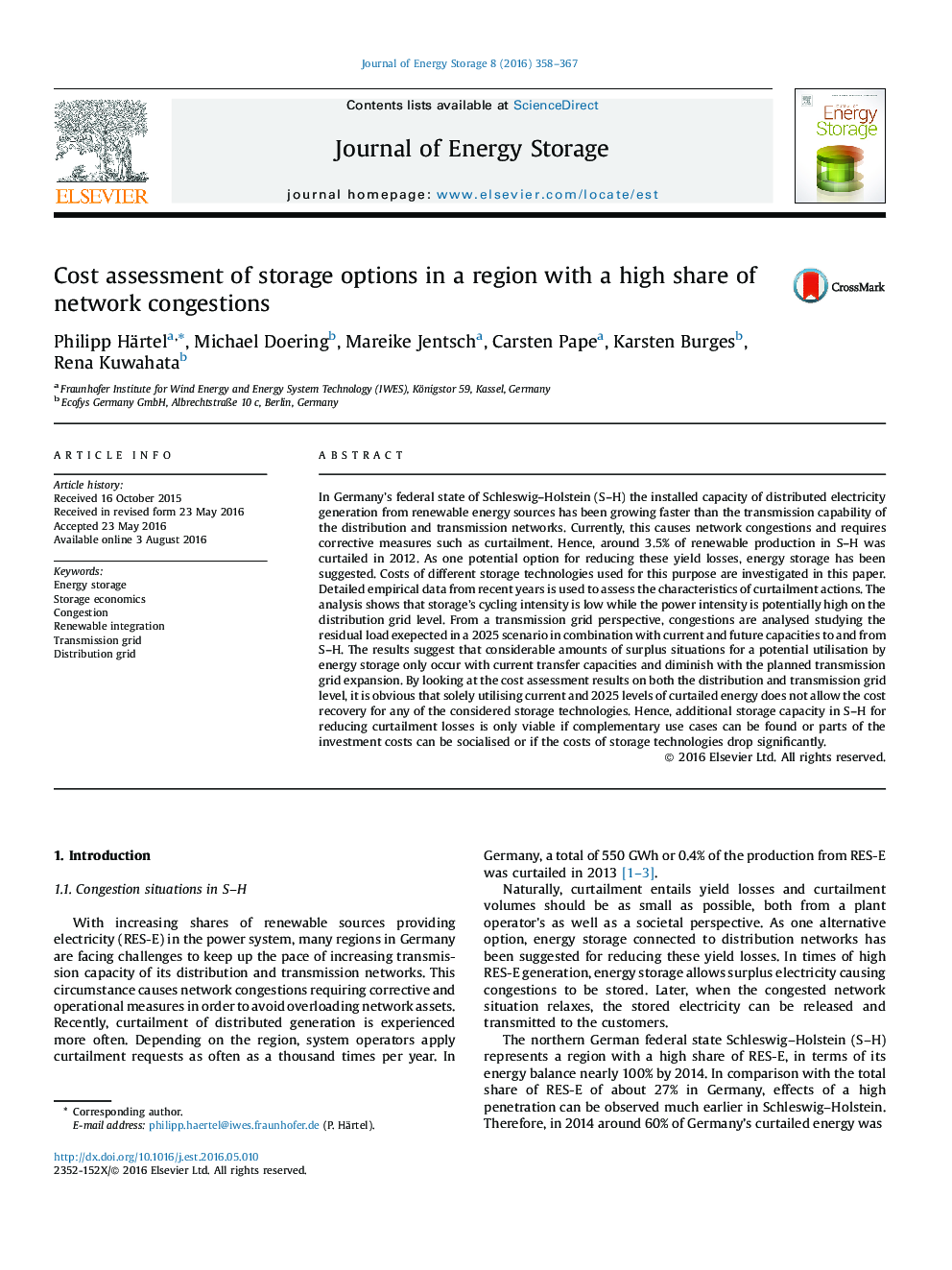| Article ID | Journal | Published Year | Pages | File Type |
|---|---|---|---|---|
| 5127398 | Journal of Energy Storage | 2016 | 10 Pages |
â¢Distribution grid congestions characterized by low cycling and high power intensity.â¢Surplus situations in S-H diminish with the planned transmission grid expansion.â¢Near future levels of curtailment will not exclusively refinance additional storage.
In Germany's federal state of Schleswig-Holstein (S-H) the installed capacity of distributed electricity generation from renewable energy sources has been growing faster than the transmission capability of the distribution and transmission networks. Currently, this causes network congestions and requires corrective measures such as curtailment. Hence, around 3.5% of renewable production in S-H was curtailed in 2012. As one potential option for reducing these yield losses, energy storage has been suggested. Costs of different storage technologies used for this purpose are investigated in this paper. Detailed empirical data from recent years is used to assess the characteristics of curtailment actions. The analysis shows that storage's cycling intensity is low while the power intensity is potentially high on the distribution grid level. From a transmission grid perspective, congestions are analysed studying the residual load exepected in a 2025 scenario in combination with current and future capacities to and from S-H. The results suggest that considerable amounts of surplus situations for a potential utilisation by energy storage only occur with current transfer capacities and diminish with the planned transmission grid expansion. By looking at the cost assessment results on both the distribution and transmission grid level, it is obvious that solely utilising current and 2025 levels of curtailed energy does not allow the cost recovery for any of the considered storage technologies. Hence, additional storage capacity in S-H for reducing curtailment losses is only viable if complementary use cases can be found or parts of the investment costs can be socialised or if the costs of storage technologies drop significantly.
